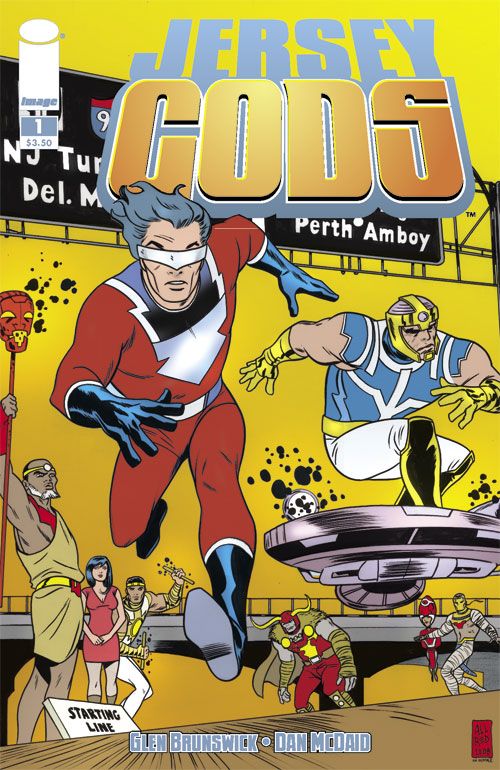"Jersey Gods" #1 is a charming read, but not quite what was promised -- yet. The solicitation for this issue promotes the story of a cosmic god that's married to a Jersey girl and lives three doors down from his in-laws. The high concept pitch screams Jack Kirby meets "Everybody Loves Raymond." The actual first issue is all set-up and getting to the point where Barock (the god) and Zoe (the Jersey girl) marry and live the wacky sitcom life of the solicitations. Not that there's anything wrong with that.
Zoe has just been dumped by her boyfriend prior to the Christmas holidays and soon finds herself in a mall, about to be killed by a giant, grey, hairy space god called Minog. Barock is patrolling space with Helius, a brash superficial young god, when the call comes in to stop Minog from killing humans. It's not a bad set-up, but it seems more concerned with establishing who everyone is than just jumping into the story.
Dialogue between Barock and Helius is purposeful in establishing that there are two groups of gods, the Orbiters and the Walkers, and that the former is corrupt and superficial, while the second is honorable and responsible. Thankfully, Glen Brunswick doesn't allow it to degenerate into obvious detail-dropping, and uses the dialogue to also establish that Barock is very in line with his Walker heritage, while Helius is rebellious and finds himself drawn to the Orbiters.
The building upon Jack Kirby's New Gods is obvious and it's smart that Brunswick and artist Dan McDaid acknowledge it early. "Jersey Gods" wears its Kirby influence on its sleeve and makes no apologies, but seems more interested in the interaction between the gods and humans -- particularly since the gods are just as "human" in their actions as humans. Helius is superficial and lecherous, allowing Barock to fight Minog alone while trying to pick up Zoe.
McDaid's art, as is evident in the preview, has a strong Kirby influence, but is also very fluid and rougher. There are elements of simpler cartooning here with eyes that are just dots and a heavy use of shadow that also recalls Erik Larsen. He's very adept at facial expressions, making it clear exactly what's going on inside each character's head.
McDaid's action is very energetically drawn, using "speed lines" to help convey movement and dynamic poses. I also really like the designs of the gods here, like Minog looking like a rocky creature, but also having a hairy chest and arms.
I do wish that the series began with Barock and Zoe already married and the details of how they met given in flashbacks or even saved for later in the series. The concept for this book is so intriguing that starting off slowly instead of in medias res seems an odd choice, and maybe not the best.

